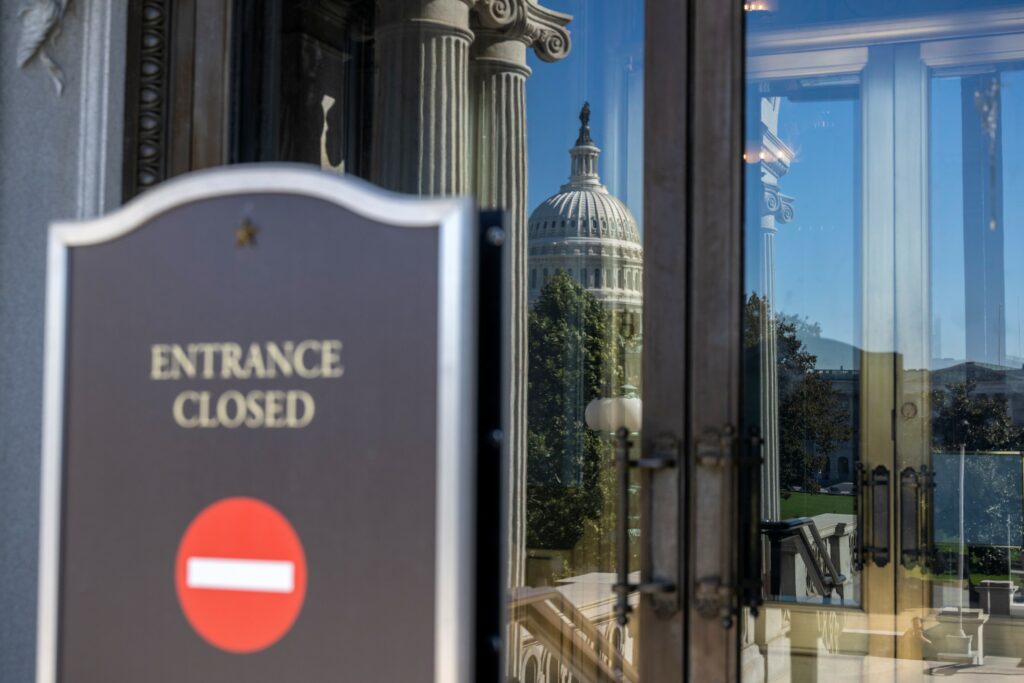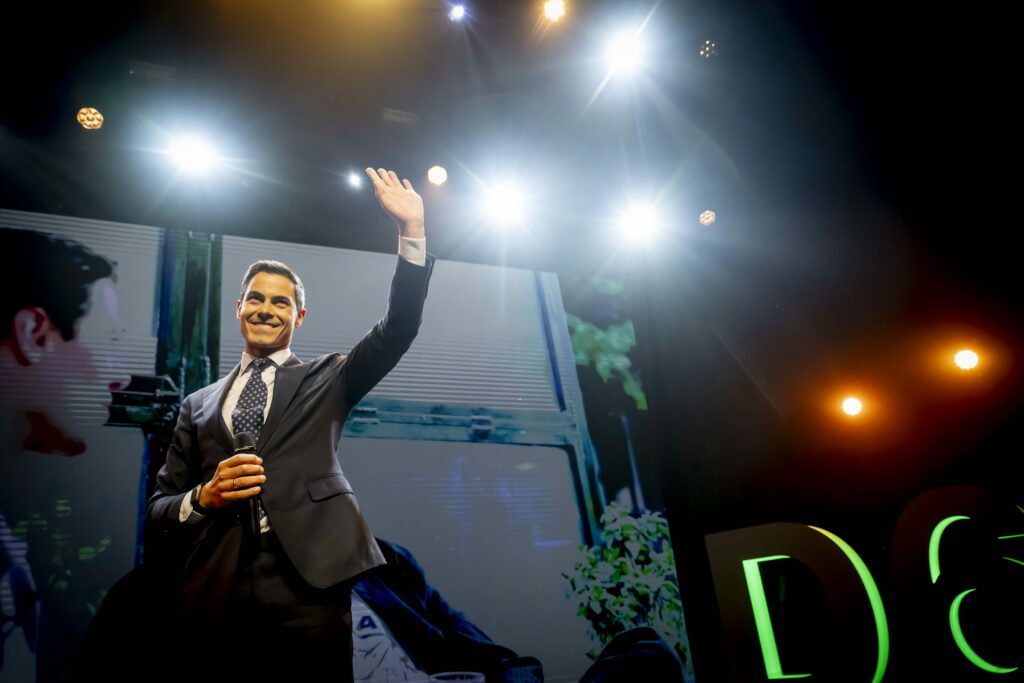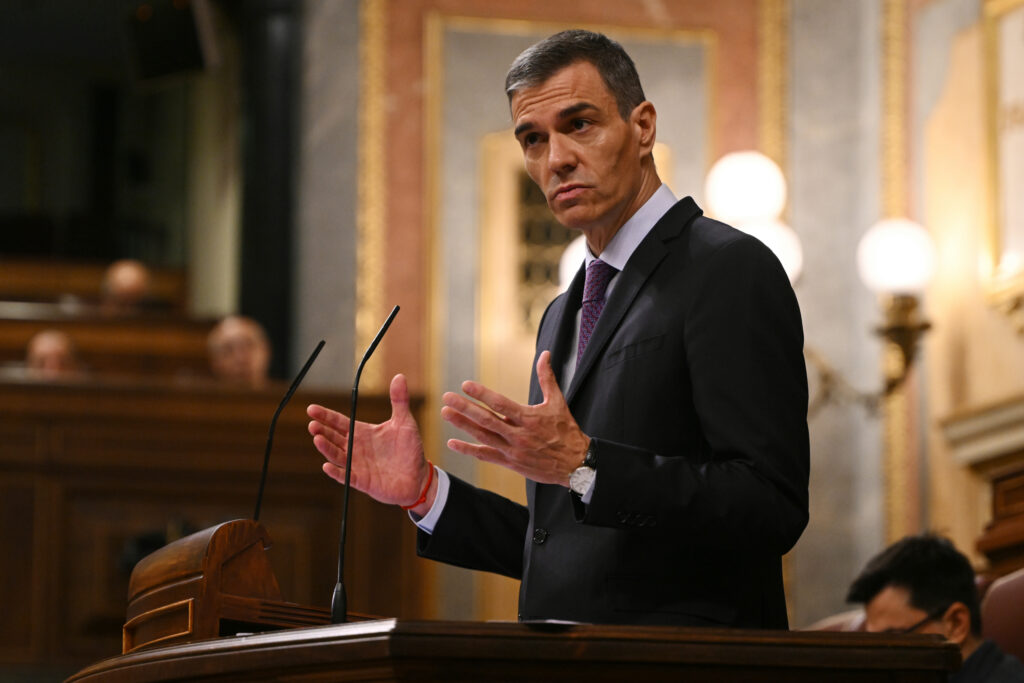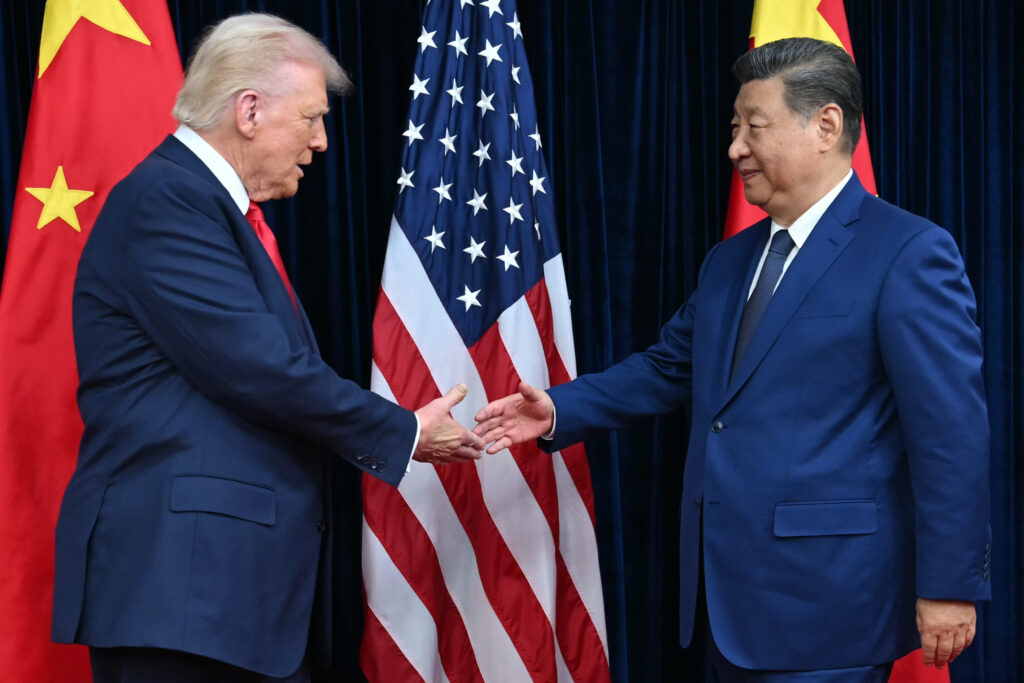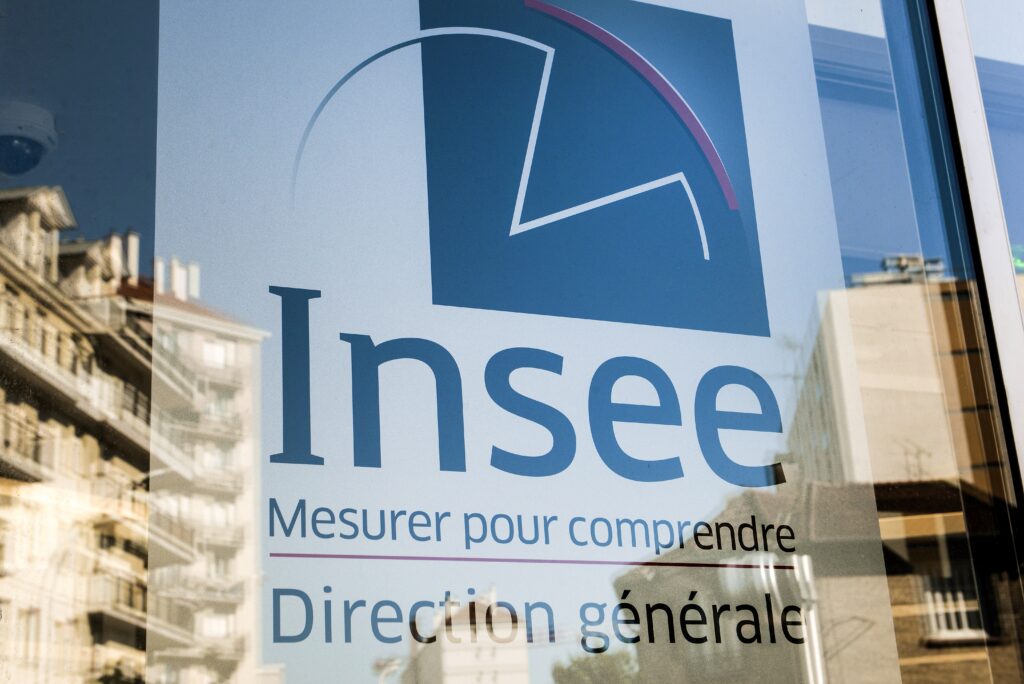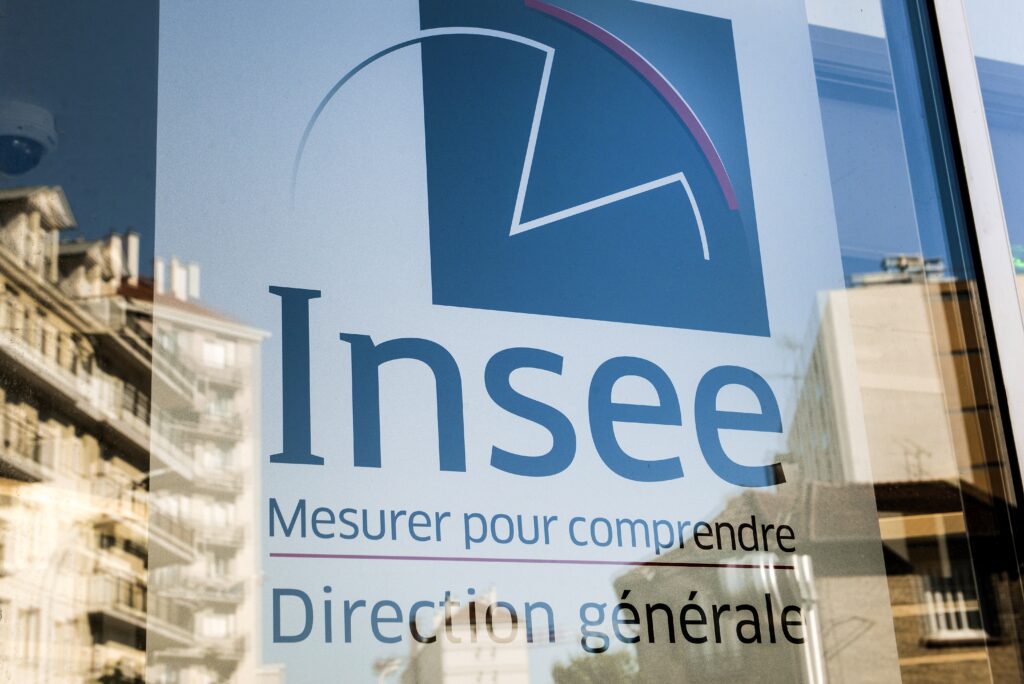US economy in the dark as government shutdown cuts off crucial data
US policymakers, financial institutions and business owners have been flying blind for almost a month as a government shutdown has stopped the release of crucial federal economic data ranging from the size of the labor force to the country’s GDP.The void is set to deepen by Thursday as Washington holds off publishing gross domestic product (GDP) numbers measuring the growth of the world’s biggest economy in the July to September period.The United States has already delayed reports on employment, trade, retail sales and others, only recalling some furloughed staff to produce key inflation figures needed for the government to calculate Social Security payments.Congressional Republicans and Democrats remain at an impasse, each assigning blame to the other side over the shutdown with no quick end in sight and food aid for millions now at stake.Analysts warn the growing information blackout could, in turn, cause businesses to lower hiring and investment.”There’s a huge demand right now for government data,” said Heather Long, chief economist at Navy Federal Credit Union. “Every industry is trying to figure out if the Federal Reserve is going to keep cutting interest rates.”The central bank’s decisions hinge upon the economy’s health, particularly inflation and the weakening jobs market.”This is the time of year where most organizations are finalizing their budgets for 2026,” Long told AFP.”So, almost any company is sitting there thinking: Do we think 2026 is going to be an uptick? Or a slowdown, or a recession?”The nonpartisan Congressional Budget Office estimates the shutdown could cost the economy up to $14 billion.Economist Matthew Martin of Oxford Economics expects firms to proceed cautiously, with President Donald Trump’s tariffs already sending uncertainty surging this year.”Businesses would therefore reduce their overall hiring to be on the safe side of things, until they see data that really points towards increased demand, or at least stabilization in the economy,” he told AFP.Similarly, those in the financial markets need data to make investments and decide their moves in equities, he said.- ‘Tainted data’ -Should the shutdown last through mid-November, as prediction markets expect, most delayed data releases will likely not come out until December, Goldman Sachs said in a note this week.”The risk would grow that delays could distort not just the October but the November data too,” the report added.Long said that October’s data could even be lost if the shutdown drags on for too long, “because the data was not collected.”Government workers could ask people to recount economic conditions once the shutdown ends, but this proves tricky if the delay is too long, she said.The risk is no data or “tainted data” if memories are seen as less reliable over time, she added.While economists, policymakers and business leaders have been relying on private sector data, analysts stress that these cannot replace numbers produced by the US government, which are viewed as the gold standard.”We have a remarkable amount of uncertainty about just literally what’s happening with labor supply, like how many people are in the United States and want jobs,” said Brookings Institution senior fellow Wendy Edelberg.She added that there is significant disagreement about how many people have left the country since the start of 2025.Wells Fargo senior economist Sarah House said despite strong GDP growth recently, there are many “signs of strain underneath the surface,” alongside signals that “not every component or group in the economy is doing equally well.”She cautioned that the shutdown is unhelpful for the economy: “If you’re not sure when your next paycheck is coming as a government worker, you’re not going to be going out to eat for dinner.” “You’re maybe pushing off a trip, or just not buying little discretionary things.”
UN calls for end to Sudan siege after mass hospital killingsThu, 30 Oct 2025 04:07:38 GMT
UN chief Antonio Guterres called for an immediate end to military escalation in Sudan on Thursday after reports that more than 460 people were shot dead in a maternity hospital by paramilitary forces.Mohammad Hamdan Daglo, the head of the Rapid Support Forces (RSF) paramilitaries which recently seized the city of El-Fasher from army forces, has …
UN calls for end to Sudan siege after mass hospital killings
UN chief Antonio Guterres called for an immediate end to military escalation in Sudan on Thursday after reports that more than 460 people were shot dead in a maternity hospital by paramilitary forces.Mohammad Hamdan Daglo, the head of the Rapid Support Forces (RSF) paramilitaries which recently seized the city of El-Fasher from army forces, has vowed the country would be unified by “peace or through war”.The capture of El-Fasher, the last army holdout in the vast western region of Darfur, comes after more than 18 months of brutal siege, sparking fears of a return to the ethnically targeted atrocities of 20 years ago.Accusations of mass killings have mounted, with the World Health Organization (WHO) condemning reports that 460 people were killed at the Saudi Maternity Hospital, the last partially functional hospital in El-Fasher.The WHO said the hospital was on Sunday “attacked for the fourth time in a month, killing one nurse and injuring three other health workers”. Two days later, “six health workers, four doctors, a nurse and a pharmacist, were abducted” and “more than 460 patients and their companions were reportedly shot and killed in the hospital,” the organisation said.Guterres said in a statement he was “gravely concerned by the recent military escalation” in El-Fasher, calling for “an immediate end to the siege & hostilities”.International powers have struggled for months to mediate an end to the fighting between the paramilitaries and the regular army, raging since April 2023.Daglo’s paramilitaries now control most of western Sudan, Africa’s third-largest country, while the regular army under Abdel Fattah al-Burhan dominates the north, east and centre.While the army regained full control over the capital Khartoum in March, the RSF has set up a parallel administration in the southwestern city of Nyala.Analysts warn that the country is now de facto partitioned and may prove very hard to piece back together.- ‘Systemic killing’ -Daglo said in a speech Wednesday that he was “sorry for the inhabitants of El-Fasher for the disaster that has befallen them” and that civilians were off limits.The RSF — descended from Janjaweed militias that attacked non-Arab communities in Darfur two decades ago — has again been accused of carrying out ethnic genocide against civilians, with graphic videos circulating on social media.Sudanese Arabs are the dominant ethnic group in the country, but the majority in Darfur are from non-Arab communities such as the Fur people.The Sudanese government has accused the RSF of killing more than 2,000 civilians and targeting mosques and Red Crescent aid workers in the city.Yale University’s Humanitarian Research Lab said Tuesday that satellite imagery showed “mass killing events” with “corroboration of alleged executions around Saudi Hospital and a previously unreported potential mass killing at an RSF detention site at the former Children’s Hospital in eastern El-Fasher”.It said there was also ongoing “systematic killing” at one location outside the city.The lab had warned earlier of a “systematic and intentional process of ethnic cleansing” of non-Arab communities.- Thousands displaced -The seizing of El-Fasher has left the RSF in control of a third of Sudan, with fighting now concentrated in the central Kordofan region.On Tuesday, the International Federation of Red Cross and Red Crescent Societies reported five Sudanese volunteers killed and three missing in Bara, a city in Kordofan captured by the RSF last week.More than 33,000 people have fled El-Fasher since Sunday for the town of Tawila, about 70 kilometres (40 miles) to the west, which has already welcomed more than 650,000 displaced people.AFP images from Tawila showed displaced people, some of them with bandages, carrying their belongings and setting up temporary shelters.Around 177,000 people remain in El-Fasher, which had a population of more than one million before the war.Access routes to El-Fasher and satellite-based communications in the city remain cut off — though not for the RSF, which controls the Starlink network there.- Truce talks stalled -Sudan’s war has killed tens of thousands of people, displaced millions and triggered the world’s largest displacement and hunger crisis.The so-called Quad group — comprising the United States, Egypt, the United Arab Emirates and Saudi Arabia — held talks over several months towards securing a truce. But those talks have reached an impasse, an official close to the negotiations said, with “continued obstructionism” from the army-aligned government.While diplomats have preached peace, outside powers, including Quad members, have been accused of interfering in the conflict.
Pays-Bas: l’extrême droite au coude à coude avec un parti centriste, selon une nouvelle projection
Donnée dans un premier temps battue, l’extrême droite de Geert Wilders est désormais donnée en tête des législatives anticipées aux Pays-Bas, à égalité avec un parti centriste pro-européen, dans une projection publiée jeudi à l’issue de ce scrutin très suivi en Europe.Alors que les sondages réalisés à la sortie des urnes avaient créé la surprise en plaçant en première position le parti progressiste D66 de Rob Jetten, devant le parti d’extrême droite PVV de Geert Wilders, l’agence ANP leur a ensuite attribué 26 sièges chacun, sur 150 au Parlement. Cette projection s’appuie sur les résultats prenant en compte le dépouillement de près de 95% des voix.Au début de cette nuit électorale à suspense, test de l’avancée de l’extrême droite en Europe, l’institut Ipsos I&O donnait 27 sièges à D66 et 25 au PVV.Dans tous les cas, c’est une longue période de négociations qui s’ouvre pour les partis pour tenter de former une coalition, dans un système politique très fragmenté.Et c’est un revers pour le PVV qui perdrait 11 sièges par rapport à son succès électoral retentissant de 2023.”Les électeurs se sont exprimés. Nous espérions un autre résultat mais nous sommes restés fidèles à nous-mêmes”, a déclaré sur X le dirigeant d’extrême droite de 62 ans.Quel que soit le résultat définitif, M. Wilders ne sera a priori pas Premier ministre, les principaux autres partis ayant exclu pour l’instant toute nouvelle collaboration avec lui, le jugeant peu fiable ou ses opinions trop peu acceptables.Les premiers résultats placent donc le leader de D66, Rob Jetten, 38 ans, en pole position pour devenir le plus jeune Premier ministre néerlandais, et le premier ouvertement homosexuel.Ses partisans ont laissé éclater leur joie lors de leur soirée électorale à Leyde, près de La Haye, brandissant des drapeaux néerlandais et européens.”On l’a fait!” s’est exclamé M. Jetten dans un discours.”Il s’agit d’un résultat électoral historique car nous avons montré non seulement aux Pays-Bas mais aussi au monde entier qu’il est possible de vaincre les mouvements populistes et d’extrême droite”, a-t-il déclaré devant des journalistes celui qui était monté en flèche ces derniers jours dans les sondages grâce à un message optimiste et une forte présence médiatique.Les élections aux Pays-Bas étaient suivies de près en Europe car elles devaient permettre d’évaluer l’ampleur de la poussée de l’extrême droite partout dans le continent, notamment au Royaume-Uni, en France et en Allemagne.- “Pas si agressif” -M. Wilders a lui-même déclenché les élections anticipées en torpillant le gouvernement sortant après un différend sur l’immigration, retirant le PVV d’une fragile coalition quadripartite.La campagne s’est principalement jouée autour de l’immigration et de la crise du logement, qui touche surtout les jeunes dans ce pays densément peuplé. Elle a été entachée de violences lors de manifestations anti-immigration, et de désinformation.Bart Paalman, un boulanger de 53 ans, a voté à la maison Anne Frank à Amsterdam, transformée en bureau de vote. “La société devrait être plus positive. C’est pourquoi je vote pour un parti qui n’est pas si agressif”, a-t-il expliqué à l’AFP.Le résultat définitif devrait être connu jeudi et les partis vont s’atteler à s’accorder sur une coalition, un processus qui pourrait prendre des mois.Derrière les deux formations en tête, le parti libéral de centre-droit VVD devrait remporter 22 sièges, l’alliance de gauche Verts/Travaillistes, 20, selon la projection d’ANP.”Il faudra certainement du temps aux Pays-Bas pour retrouver la stabilité et former une nouvelle coalition”, a observé Sarah de Lange, professeure de sciences politiques à l’université de Leiden, avant le sondage de sortie des urnes. “Les partis sont idéologiquement très différents, ce qui rendra les compromis très difficiles”, ajoute-t-elle, interrogée par l’AFP.En attendant la formation d’un nouveau gouvernement, le Premier ministre démissionnaire, Dick Schoof, continue de gérer les affaires courantes.Frans Timmermans, 64 ans, ancien vice-président de la Commission européenne, a jeté l’éponge après le résultat décevant de son alliance écologiste de gauche.”Ce soir, je quitte mes fonctions de chef de parti. Le coeur lourd”, a-t-il déclaré.
Affaires de corruption en Espagne: Pedro Sánchez devant une commission d’enquête
Le Premier ministre socialiste espagnol Pedro Sánchez comparaît jeudi devant une commission d’enquête sénatoriale afin de s’expliquer sur un scandale de corruption dont les principaux protagonistes ont longtemps été ses hommes de confiance.Connue sous le nom d'”affaire Koldo”, du nom de Koldo García Izaguirre, l’assistant d’un ancien ministre des Transports et ex-bras droit de M. Sánchez, José Luis Ábalos, cette affaire est l’un des scandales qui éclaboussent depuis plus d’un an l’entourage du Premier ministre.Sa comparution devant cette commission sénatoriale se produira dans un climat de polarisation politique extrême, le Parti populaire (PP, opposition de droite), majoritaire à la chambre haute, ayant fait de la corruption l’axe principal de son offensive contre le gouvernement de gauche dirigé par M. Sánchez.”Pensez-vous dire la vérité demain (jeudi) devant la commission?”, lui a ainsi demandé le leader du PP, Alberto Núñez Feijóo, mercredi matin au Congrès des députés.- “Vous mentirez de nouveau” -M. Feijóo a ajouté que sa question était “rhétorique”, dans la mesure où il est, selon lui, exclu que Pedro Sánchez puisse dire la vérité sur cette affaire, de peur de s’incriminer.”Vous mentirez de nouveau, parce que vous savez que la vérité entraînerait votre chute” a lancé le chef du premier parti d’opposition, accusant M. Sánchez d’avoir menti “à tous” et sur tous les sujets.L’objectif du PP est de montrer que le Premier ministre était au courant des malversations révélées par l’enquête sur l’affaire Koldo et qu’il y était même impliqué.Ce scandale a éclaté au grand jour en février 2024 avec l’arrestation de Koldo García Izaguirre, soupçonné d’être au cœur d’une énorme escroquerie ayant permis à une petite société d’obtenir entre mars et juin 2020 – au plus fort de la pandémie de Covid-19 – des contrats d’un montant de 53 millions d’euros pour fournir des masques à diverses administrations. Ces contrats avaient dégagé des commissions illégales de plusieurs millions d’euros.La justice est vite remontée jusqu’à José Luis Ábalos, le juge chargé de l’enquête considérant qu’il avait joué un rôle d'”intermédiaire” dans la combine. Outre son poste de ministre, M. Ábalos était surtout secrétaire à l’Organisation du Parti socialiste, poste clé qui en faisait l’homme de confiance de M. Sánchez.Il a été expulsé du Parti socialiste, mais l’affaire n’a fait ensuite que s’aggraver pour le Premier ministre.Car le successeur de M. Ábalos comme secrétaire à l’Organisation du Parti socialiste, Santos Cerdán, a à son tour été mis en cause en juin dernier, après la publication d’un rapport de police selon lequel il était au cœur du réseau de corruption et avait touché des pots-de-vin en échange de contrats publics.Il a été placé en détention provisoire en juillet.- Englué -Face à ce séisme, Pedro Sánchez a demandé pardon à plusieurs reprises aux Espagnols, assurant qu’il ignorait tout de l’affaire et que le Parti socialiste, dont il est secrétaire général depuis 2017, n’avait jamais bénéficié de financements illégaux. Il a redit en septembre qu’il ne disposait d'”aucune information” sur les délits reprochés à José Luis Ábalos, Santos Cerdán et Koldo García Izaguirre, et a rejeté toute “corruption systémique” au sein de son parti.Il reprendra cette ligne de défense jeudi devant la commission sénatoriale, mais il est certain qu’il ne convaincra pas la droite, qui se dit assurée qu’il était au courant et l’accuse d’avoir tenté d’étouffer le scandale.Outre cette tentaculaire affaire Koldo, M. Sánchez est englué dans d’autres affaires judiciaires qui le touchent de près: son épouse, Begoña Gómez, devrait être jugée pour une affaire de corruption et trafic d’influence, son frère David le sera également pour trafic d’influence et le procureur général de l’État, Álvaro García Ortiz, qu’il a nommé, sera jugé à partir de lundi pour violation du secret judiciaire.L’audition de Pedro Sánchez, qui doit débuter à 09H00 (08H00 GMT), devrait durer plusieurs heures.
Trade truce in balance as Trump meets ‘tough negotiator’ Xi
US President Donald Trump and China’s leader Xi Jinping opened on Thursday their first face-to-face meeting in six years, seeking a truce to end a trade war that has roiled the world economy.The US president, who minutes before said he has ordered the Pentagon to start nuclear weapons testing on a level with China and Russia, complimented a smiling Xi as a “very tough negotiator” as they shook hands.”We’ll have a great understanding,” Trump said in Busan, South Korea, predicting a “fantastic relationship for a long period of time”.Xi acknowledged that both sides did not always see eye to eye, but should strive to be “partners and friends”.”China and the US can jointly shoulder our responsibility as major countries and work together to accomplish more great and concrete things for the good of our two countries and the whole world,” said Xi.Sitting opposite each other each leader was flanked by senior officials including Secretary of State Marco Rubio, Treasury chief Scott Bessent and Commerce Secretary Howard Lutnick.Xi’s team, which arrived from Beijing shortly before — the US side was already in South Korea — included Foreign Minister Wang Yi, Commerce Minister Wang Wentao and Vice Premier He Lifeng.The US leader’s latest missive on nuclear weapons testing broadened the stakes for his talks with Xi.– ‘Even in five years’ –Minutes before meeting Xi, Trump wrote on Truth Social that “because of other countries testing programs, I have instructed the Department of War to start testing our Nuclear Weapons on an equal basis”.Trump added that in terms of nuclear weapons stockpiles, China was a “distant third” behind the United States and Russia “but will be even in 5 years”.The comments came a day after Russian President Vladimir Putin said Moscow had successfully tested a nuclear-capable, nuclear-powered underwater drone, in defiance of US warnings.Trump did not provide details or respond to a question from a journalist about his surprising nuclear announcement before the crucial meeting with Xi.The world’s two top economies’ trade tussle — encompassing everything from rare earths to soybeans and port fees — has rocked markets and gummed up supply chains for months.Following productive preparatory talks by top officials, Trump said on Wednesday on his way to South Korea that “a lot of problems are going to be solved” in a “great meeting”.Trump indicated that the agreement would include lowering 20 percent tariffs on Chinese goods related to fentanyl, which has killed tens of thousands of Americans.Of particular importance to Trump — with an eye on US farmers — is whether China will resume purchases of American soybeans.Another major issue is export controls on rare earths announced by Beijing this month that prompted Trump to call the Xi summit into question.Beijing holds a virtual monopoly on these materials, which are essential for sophisticated electronic components across a range of industries.”The easiest wins could include removing port fees for ships or lifting some fentanyl-related tariffs, which fall fully under presidential authority. China, in turn, could agree to purchase more US commodities to show goodwill,” Yue Su at The Economist Intelligence Unit told AFP.- Crowning achievement -The meeting is taking place on the sidelines of an Asia-Pacific Economic Cooperation (APEC) summit of 21 countries in Gyeongju including the leaders of Japan, Australia and Canada.It is the final stop on an Asia tour that saw Trump showered with praise and gifts, including a replica of an ancient Korean golden crown.In Japan, new Prime Minister Sanae Takaichi said she would nominate Trump for the Nobel Peace Prize and gave him a putter and a gold-plated golf ball.However, Trump’s hopes of a re-run of his 2019 meeting with North Korean leader Kim Jong Un at the Demilitarized Zone frontier appear to have dashed.Trump said though that they would meet in the “not too distant future” and that he would like to “straighten out” tensions between North and South Korea.On Thursday, he hailed the military alliance with South Korea as “stronger than ever” and said he had given the green-light for Seoul to build a nuclear powered submarine.One surprise in the talks could be if Xi brings up Taiwan, with speculation that Beijing might press Trump to water down US backing for the self-ruled island.Since 1979, Washington has recognised Beijing over Taipei as the sole legitimate Chinese power, even though the United States remains Taiwan’s most powerful ally and its main arms supplier.burs-stu/hmn
France: l’Insee dévoile les chiffres d’une croissance attendue plutôt résiliente
L’Institut national de la statistique dévoile jeudi le niveau de croissance atteint au troisième trimestre par l’économie française, relativement résiliente malgré la forte incertitude politique et la hausse des droits de douane américains. L’Insee anticipe une hausse de 0,3% du produit intérieur brut (PIB) entre juillet et septembre par rapport aux trois mois précédents, similaire à celle du deuxième trimestre. Cela place la deuxième économie de la zone euro en bonne voie pour atteindre la croissance de 0,7% attendue par le gouvernement en 2025, mieux que l’Allemagne (0,2%) dont les chiffres trimestriels sont également attendus jeudi avec ceux de l’Italie. L’Espagne a, elle, fait état mercredi d’une croissance de 0,6% au troisième trimestre, visant 2,7% sur l’année.Avant le début de débats budgétaires houleux, l’économie française a bénéficié durant l’été d’une poursuite du rebond de l’aéronautique, qui avait été pénalisé depuis le Covid par des problèmes d’approvisionnement, explique à l’AFP Stéphane Colliac, économiste chez BNP Paribas. Airbus a augmenté en septembre le rythme de ses livraisons, une hausse de production perçue comme “un phénomène durable” pouvant se traduire, “en année pleine, par 0,3 ou 0,4 point de croissance”, détaille-t-il. “Un deuxième moteur, c’est la montée en charge des efforts de défense”, la France comme l’Europe souhaitant se réarmer face à la menace russe. – Investissements convalescents -Par ailleurs, la baisse des taux directeurs de la Banque centrale européenne (BCE) face au reflux de l’inflation se traduit par une amélioration de l’investissement des ménages, dans le logement notamment, tandis que celui des entreprises est convalescent. L’institution de Francfort devrait décider jeudi de laisser ses taux inchangés, pour la troisième fois d’affilée. Dans sa dernière note de conjoncture publiée en septembre, l’Insee jugeait toutefois les moteurs de l’économie française fragiles dans un contexte marqué par un regain d’instabilité politique affectant la confiance des ménages et la consommation, un pilier traditionnel de la croissance. Le gouvernement de François Bayrou a chuté début septembre, quelques semaines seulement après la présentation des orientations budgétaires de son gouvernement mi-juillet.Sébastien Lecornu lui a succédé le 9 septembre, désormais en première ligne pour défendre un budget âprement débattu dans une Assemblée nationale sans majorité, où plane toujours la menace d’une censure du gouvernement. Les échanges se cristallisent notamment sur la taxation des plus riches, réclamée par le PS comme prix de son soutien après avoir obtenu la suspension de la réforme des retraites. Le gouvernement ambitionnait initialement un effort global d’une trentaine de milliards d’euros pour 2026, entre nouveaux prélèvements (14 milliards) et économies de dépenses (17 milliards) afin de ramener le déficit public à 4,7% du PIB en 2026, après 5,4% en 2025. Il accepterait d’assouplir l’objectif jusqu’à un niveau se situant “sous 5%” pour permettre des compromis.- Croissance inéquitable -“Ce ne serait pas le budget le plus optimal dont on puisse rêver, mais en avoir un, c’est déjà quelque chose. Cela permettrait d’avoir l’augmentation de l’effort de défense (qui est) un élément de la croissance” et de maintenir le cap sur l’objectif d’un déficit sous 3% en 2029, note Stéphane Colliac.Chaque dixième de point de pourcentage de déficit supplémentaire correspond à presque 3 milliards d’euros de dépenses supplémentaires.L’incertitude politique et la situation dégradée de ses finances publiques a déjà valu à la France de voir sa note souveraine abaissée par les agences de notation S&P et Fitch, tandis que Moody’s l’a placée sous perspective négative. Le gouverneur de la Banque de France François Villeroy de Galhau y voit un risque “d’étouffement progressif” pour le pays. A cette situation instable s’ajoute pour les ménages des craintes concernant le chômage, bien qu’elles se soient un peu atténuées, en raison notamment de la vulnérabilité de secteurs comme l’automobile ou la chimie, affectés par la hausse des droits de douane américains et la concurrence étrangère. “On est dans une économie avec une croissance inéquitablement répartie, où il y a des gagnants et des perdants”, souligne l’économiste de BNP Paribas.
France: l’Insee dévoile les chiffres d’une croissance attendue plutôt résiliente
L’Institut national de la statistique dévoile jeudi le niveau de croissance atteint au troisième trimestre par l’économie française, relativement résiliente malgré la forte incertitude politique et la hausse des droits de douane américains. L’Insee anticipe une hausse de 0,3% du produit intérieur brut (PIB) entre juillet et septembre par rapport aux trois mois précédents, similaire à celle du deuxième trimestre. Cela place la deuxième économie de la zone euro en bonne voie pour atteindre la croissance de 0,7% attendue par le gouvernement en 2025, mieux que l’Allemagne (0,2%) dont les chiffres trimestriels sont également attendus jeudi avec ceux de l’Italie. L’Espagne a, elle, fait état mercredi d’une croissance de 0,6% au troisième trimestre, visant 2,7% sur l’année.Avant le début de débats budgétaires houleux, l’économie française a bénéficié durant l’été d’une poursuite du rebond de l’aéronautique, qui avait été pénalisé depuis le Covid par des problèmes d’approvisionnement, explique à l’AFP Stéphane Colliac, économiste chez BNP Paribas. Airbus a augmenté en septembre le rythme de ses livraisons, une hausse de production perçue comme “un phénomène durable” pouvant se traduire, “en année pleine, par 0,3 ou 0,4 point de croissance”, détaille-t-il. “Un deuxième moteur, c’est la montée en charge des efforts de défense”, la France comme l’Europe souhaitant se réarmer face à la menace russe. – Investissements convalescents -Par ailleurs, la baisse des taux directeurs de la Banque centrale européenne (BCE) face au reflux de l’inflation se traduit par une amélioration de l’investissement des ménages, dans le logement notamment, tandis que celui des entreprises est convalescent. L’institution de Francfort devrait décider jeudi de laisser ses taux inchangés, pour la troisième fois d’affilée. Dans sa dernière note de conjoncture publiée en septembre, l’Insee jugeait toutefois les moteurs de l’économie française fragiles dans un contexte marqué par un regain d’instabilité politique affectant la confiance des ménages et la consommation, un pilier traditionnel de la croissance. Le gouvernement de François Bayrou a chuté début septembre, quelques semaines seulement après la présentation des orientations budgétaires de son gouvernement mi-juillet.Sébastien Lecornu lui a succédé le 9 septembre, désormais en première ligne pour défendre un budget âprement débattu dans une Assemblée nationale sans majorité, où plane toujours la menace d’une censure du gouvernement. Les échanges se cristallisent notamment sur la taxation des plus riches, réclamée par le PS comme prix de son soutien après avoir obtenu la suspension de la réforme des retraites. Le gouvernement ambitionnait initialement un effort global d’une trentaine de milliards d’euros pour 2026, entre nouveaux prélèvements (14 milliards) et économies de dépenses (17 milliards) afin de ramener le déficit public à 4,7% du PIB en 2026, après 5,4% en 2025. Il accepterait d’assouplir l’objectif jusqu’à un niveau se situant “sous 5%” pour permettre des compromis.- Croissance inéquitable -“Ce ne serait pas le budget le plus optimal dont on puisse rêver, mais en avoir un, c’est déjà quelque chose. Cela permettrait d’avoir l’augmentation de l’effort de défense (qui est) un élément de la croissance” et de maintenir le cap sur l’objectif d’un déficit sous 3% en 2029, note Stéphane Colliac.Chaque dixième de point de pourcentage de déficit supplémentaire correspond à presque 3 milliards d’euros de dépenses supplémentaires.L’incertitude politique et la situation dégradée de ses finances publiques a déjà valu à la France de voir sa note souveraine abaissée par les agences de notation S&P et Fitch, tandis que Moody’s l’a placée sous perspective négative. Le gouverneur de la Banque de France François Villeroy de Galhau y voit un risque “d’étouffement progressif” pour le pays. A cette situation instable s’ajoute pour les ménages des craintes concernant le chômage, bien qu’elles se soient un peu atténuées, en raison notamment de la vulnérabilité de secteurs comme l’automobile ou la chimie, affectés par la hausse des droits de douane américains et la concurrence étrangère. “On est dans une économie avec une croissance inéquitablement répartie, où il y a des gagnants et des perdants”, souligne l’économiste de BNP Paribas.

